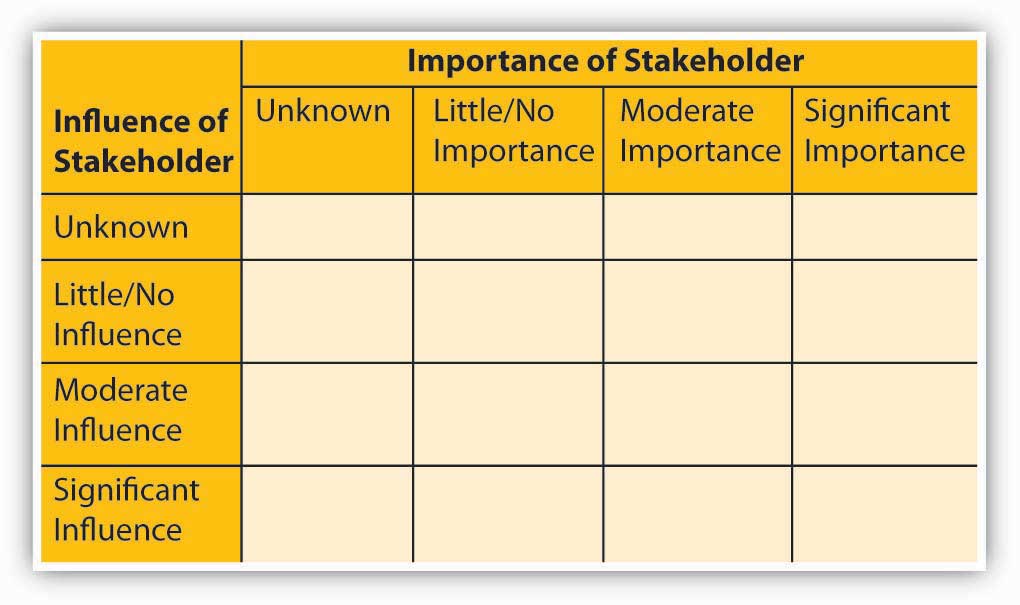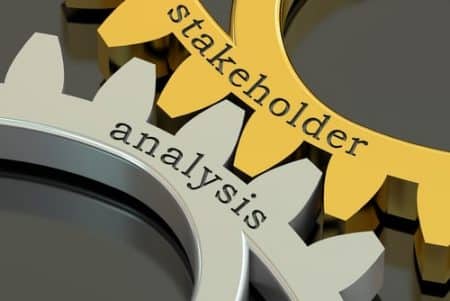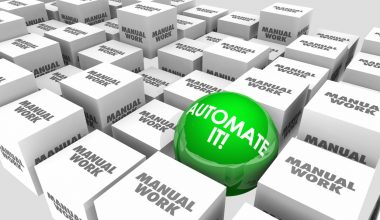You’ve crunched the figures. You’ve developed your business case for a new project or technological investment. Also, you have everything you need to make it happen. But you’re still lacking a crucial step: stakeholder approval and buy-in. Every organization includes stakeholders to help ensure that message is accurate, work is completed on time, and new initiatives are also aligned with agreed corporate goals. While their intentions are noble, stakeholders are frequently perceived as a hindrance to growth. That is why it is critical to understand the stakeholder analysis process and ensure that your aims will be supported. So, in this post, we’ll look at how to identify and gain the support of key stakeholders inside your organization using a stakeholder analysis template as well as its purpose.
Who is a Stakeholder?
A growing number of individuals influenced by your actions and also decisions is an indication of a developing career. Moreover, individuals will be affected by your job as your popularity, responsibility, or influence grows. These people may appear at different levels: some maybe your friends or coworkers, some may also be your superiors, and yet others may be your subordinates. Also, friends and family may be influenced by your employment decisions, enjoying victories and mourning losses alongside you.
Hence to maintain a consistent upward trajectory, it is prudent to consider the types of relationships that affect your work life and initiatives, as much of professional success is dependent on effective relationship management. A stakeholder is anyone who is affected by the outcome of your work.
What is Stakeholder Analysis?
Stakeholder approval and buy-in are as much about communication, education, and also visibility as they are about strategy alignment. Stakeholders must be able to comprehend where a new project or investment fits into the bigger corporate picture quickly and simply.
A stakeholder analysis enables you to map out and also develop the right amount of contact with your stakeholders based on their level of influence and interest in your project. A thorough stakeholder analysis will either ready you for the advocacy you require or prepare you for the pushback you expect.
Stakeholder Analysis Template

A stakeholder analysis template, often known as a power interest grid, can assist you in four important ways:
#1. Obtaining critical information:
You have no idea what you don’t know. Key stakeholders can frequently provide useful insight that can assist keep your project on track and successful.
#2. Obtaining additional resources:
If your stakeholder fully understands what it will take to get your project off the ground, they may be able to assist you in securing the people, tools, and resources you require to be successful.
#3. Building trust:
By continually engaging and also incorporating stakeholders in your process, you are establishing trust, which may prompt them to support future projects.
#4. Planning ahead of time:
Consistent input from key stakeholders allows you to anticipate feedback and requirements on future initiatives, allowing you to achieve buy-in more rapidly.
What is the Purpose Of Stakeholders Analysis
If stakeholders’ analysis has no importance, then, no project manager will pay attention to it. What are the purpose of stakeholders analysis and why do managers deem it important.
#1. Resolution of Conflict or Disagreement
One of the purpose of stakeholders’ analysis is its ability to get everyone on the same page. For instance, it can identify key parties that are not fully in support of a project before it progresses. It also identifies parties that stand aloof because they lack clarity and then carry everyone along. By so doing, it brings an end to a conflict that may possibly arise in the future.
#2. Identifys key Influencers that Fast track Project
One of the purpose of stakeholders analysis is its ability to also identify key influencers within the organisation. These influencers are people who will guide the project to its completion through the wealth of their wisdom. These are also people who will provide relevant support for your project.
#3.It Provides Clear Understanding Of Goals and Strategies
This is yet another purpose of stakeholders analysis. It helps to get the right team players that will give their all towards the accomplishment of your goals. Identifying the right people early, understanding the goal, as well as strategies geared towards the completion of the goal, is the first hallmark of success to your project.
Steps in Stakeholder Analysis
These are the three steps involved in doing a stakeholder analysis.
Step 1: Determine who your stakeholders are.
Think about who your stakeholders are. To do so, make a list of everyone who is touched by your work or has a vested interest in its success or failure. Some of these connections could be with investors, advisors, teammates, or even relatives.
Step 2: Determine the importance of your stakeholders.
Then, prioritize your stakeholders based on their level of influence and interest. The Stakeholder Power Interest Grid is the most effective technique for visual analysis of stakeholders.
The grid position you assign to a stakeholder indicates the actions you must take with them:
- People with a lot of influence and a lot of interests: fully engage these people and make every attempt to satisfy them.
- People with a lot of influence but not a lot of interest: Keep these stakeholders happy, but not so much that they become bored with your message.
- Low-power, extremely interested individuals: Inform and also consult with these individuals to ensure that no serious concerns occur. In a supportive capacity, people in this group can frequently be quite helpful with the intricacies of your project.
- People with low power and little interest: Again, keep an eye on them, but don’t annoy them with excessive communication.
Step 3: Learn about your main stakeholders.
Now that you’ve identified and prioritized your stakeholders, you need to know how they feel about your project. Here are some nice questions to ask:
- Do they have a vested stake in the result of your work, either financially or emotionally? Is it favorable or unfavorable?
- What is the greatest motivating factor for them?
- Which of your project’s information is relevant to them, and how should that information be communicated to them?
- What are their current thoughts on your work? Is that opinion founded on reliable information?
- Who impacts their decisions, and are those decision-makers also stakeholders?
- What can you do to gain their support if they are unlikely to be supportive of your project?
- What can you do to handle their resistance if you can’t earn their support?
After you’ve prioritized your stakeholders and taken into account their attitudes toward your project, you should think about developing a project management communication plan. A communication matrix will inform everyone involved how frequently they must include stakeholders.
Most Frequently Encountered Stakeholders
A list of common stakeholders encountered in stakeholder analysis is provided below, along with some examples of good communication tactics with them.
#1. Your immediate supervisor/manager
High authority, high interest
The productivity of the individuals they lead determines your boss’s reputation. Your manager may also have the authority to approve or reject your project (s). This implies that you should closely manage this relationship, communicating frequently and soliciting and acting on feedback.
High power, moderate interest
Shareholders and investors frequently own several entities, diluting their unique interest in your project/undertaking. As a result, in order to leverage their involvement in your work, you should speak with them frequently, consult with them, and include them, with the goal of raising their interest over time. This certainly depends on the sort of investment job available, as well as whether your project is the lone investment or part of a portfolio of investments.
#3. Government
High power, but most likely low interest
The government is in charge of the laws and regulations that could put your firm or project out of commission. For example, health code inspectors for restaurants, IRS auditors for general companies, and so on. Because government institutions monitor everything and everyone, they are unlikely to be interested in your specific business or project. As a result, your goal should be to keep them satisfied by interacting with them on a frequent basis, discussing with them, and involving them in order to keep them from being a risk to your project.
#4. Senior management
Low interest, high power
Your company’s senior executives make the most important decisions, giving them a lot of power but not a lot of time to focus on the outcomes of your project. This means that your plan should be to keep them satisfied by talking with them as frequently as necessary, consulting with them, and requesting feedback, with the goal of boosting their interest in you and your job.
#5. Your colleagues
Medium strength, medium interest
Coworkers have varying degrees of influence, but the majority of their power comes from their capacity to secure more resources for your projects, such as the backing of other coworkers and your superiors. That is, you want to keep customers satisfied and informed. Inform them about your initiative and be willing to convert their enthusiasm into a supporting position, as this will also help in your stakeholder analysis.
How can Stakeholder Analysis be adapted for use in different contexts and industries?
Depending on the specifics of the situation, Stakeholder Analysis can be adapted for use in a variety of fields and settings. There may be significant differences between the people involved in a software development project and a construction project, as well as between the needs and expectations of stakeholders in a healthcare organization and those of stakeholders in a financial services firm. The results are more likely to be applicable and helpful if the analysis is tailored to the specific context.
What are the best practices for conducting Stakeholder Analysis?
Involving stakeholders in the process, reviewing and updating the analysis on a regular basis, adopting a structured approach to identifying and categorizing stakeholders, and communicating clearly and concisely to engage stakeholders and manage expectations are all examples of good practices when conducting Stakeholder Analysis.
How can Stakeholder Analysis be used to measure the impact of a project or organization on stakeholders?
Collecting feedback from stakeholders, monitoring shifts in stakeholders’ needs and expectations over time, and keeping tabs on how they feel about the project or organization are all ways to conduct a stakeholder analysis and gauge the project’s or organization’s impact on those involved. Insights gained from this analysis can be used to refine stakeholder engagement and management tactics.
How can Stakeholder Analysis be used to identify and manage stakeholders’ expectations?
One method for identifying and managing stakeholders’ expectations is through a process called “stakeholder analysis,” which entails gathering information about and communicating with various stakeholder groups to learn about their individual needs and expectations, as well as keeping tabs on how those needs and expectations may evolve over time. As a result of this analysis, we can better understand our stakeholders, set realistic expectations, and work to prevent or resolve any potential conflicts that may arise.
What is the role of Stakeholder Analysis in risk management?
By identifying those who have a vested interest in the project or organization and learning how invested they are in mitigating risks, stakeholder analysis can contribute to risk management. With this knowledge, we can better communicate with key stakeholders about risks and risk management efforts, and design risk management strategies that account for their needs and expectations.
How can Stakeholder Analysis be integrated with other project management tools and techniques?
The outcomes of a Stakeholder Analysis can be used to inform decision-making and strategy development in other areas of project management, such as risk management, change management, and communication planning. For instance, you can use the findings of a Stakeholder Analysis to anticipate and prepare for shifts in stakeholder needs and expectations, or to craft strategic plans for communicating with key constituencies that take those groups’ interests into account.
Summary
Company projects necessitate the participation, direction, and approval of a diverse group of people from across the organization. Any of these firm stakeholders can constitute a roadblock to the project’s success if they do not understand or agree with the project’s objectives or execution plan.
However, if you seek the assistance and permission of these stakeholders early on, you can convert many of these people into enthusiastic champions of your projects. This is why, before embarking on any complicated firm initiative, it is prudent to do a stakeholder analysis, identifying all prospective stakeholders and determining how best to gain their support.
Stakeholder Analysis FAQs
Why is a stakeholder analysis important?
Stakeholder analysis identifies and removes several impediments to understanding the project’s development. It also removes impediments to the effective release of projects by gathering information on project supporters, opponents, and their levels of importance in the project.
What is the purpose of a stakeholder map?
Stakeholder mapping is the visual technique of depicting all of the stakeholders of a product, project, or idea on a single map. The fundamental advantage of a stakeholder map is that it provides a visual depiction of all the people who can have an impact on your project and how they are related.
Who is the most important internal stakeholder?
Shareholders/owners are the most essential stakeholders because they own the company. If they are dissatisfied, they can fire the company’s directors or managers, or even sell the company to someone else.






